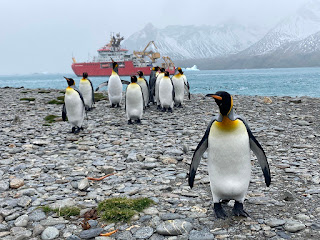During our time in the Falklands we had some nice days out hiking and sightseeing. The weather in the Falklands is constantly changing, and it seems usual to have all seasons in one day, with a persistent bitterly cold wind blowing at quite some speed, whatever else the weather is doing. Here are a few pictures.
Bodie Creek suspension bridge- the worlds most southerly suspension bridge, now falling into ruin and no longer in use. It was built in the 1920s to transfer sheep across the river to avoid a 100 mile detour around the coast…
Another ruin, the disused Cape Pembroke lighthouse (now superseded by the tiny little fencepost looking thing directly to the right of it which is a light and serves the same purpose)…
Goose Green, one of the outlying settlements in the Falklands…
The pleasingly named diddle-dee berry, used to make jam, growing in the Falklands…
Rock and sandy shorelines…
Grassy landscapes…
And huge open beaches (which usually have dolphins playing in the surf)…
Stanley church…
And my final photograph, taken from the plane as we left for home, showing the tiny red dot of the Sir David Attenborough ship, still moored in Mare Harbour…
Thanks to all the team at Bird Island who made it such an enjoyable season this year. Bird Island is such a unique and special place and it was a real privilege to be working there once again. Despite a number of years passing since my first visit, the magic of this little island for me has not changed one bit.
I will sign off here, now safely back home in the real world after a wonderfully enjoyable trip. Thanks for reading my blog- until next time, goodbye.









































